
1
Tasmania #08 Collage
| 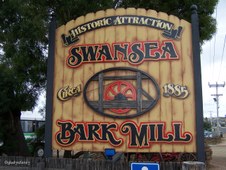
2
Swansea Bark Mill
Swansea is a classified historic town and contains many reminders of its early settlement dating from the 1820's.
| 
3
Wagon Load of Bark
This is Australia's only restored Black Wattle Bark Mill and gives an insight into the ancient art of using Bark in the process of Tanning Leather.
|
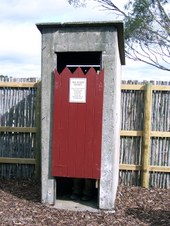
4
Aussie Dunny
A modernised version of the Aussie Dunny at the Swansea Bark Mill.
| 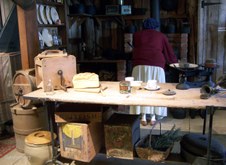
5
Kitchen Scene
The Kitchen scene of an early era is depicted in the Museum of the Swansea Bark Mill.
| 
6
Items from yesteryear
|

7
Model of a Blacksmith
| 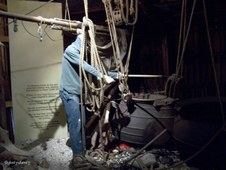
8
Extracting Whale Oil
Whale Blubber was heated in a pot over the fire to extract the Whale Oil.
| 
9
Ocellated (Spotted) Starfish
|

10
Rabbit Traps and Skins
Rabbit Traps and Rabbit Skins stretched out to dry at Swansea Bark Mill.
| 
11
Brief description of the Tanning Process
| 
12
Peg Drum Thresher
This Peg Drum Thresher was used to separate the grain from the sheaf.
|

13
Car Engine
Car Engine, Year 1910, HP 12.. Make: German Stoewer, converted to Stationary Engine. On display at Swansea Bark Mill.
| 
14
Young Wattle Trees
Bark from wattle trees was ground for use in tanning leathers. Some of the buildings at this mill were being constructed in 1885 and the last bark was ground in 1960. Now the mill is restored as a working museum with much of the old machinery still on site.
| 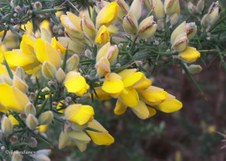
15
Prickly Gorse
Yellow Flowers of the introduced species Prickly Gorse at Swansea.
|

16
Rural Swansea
| 
17
Sheep in Paddock
| 
18
Shady Trees
|

19
Thistles, an introduced pest
Introduced Thistles have spread throughout the rural areas of Tasmania.
| 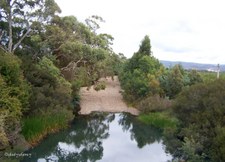
20
Roadside Pool
| 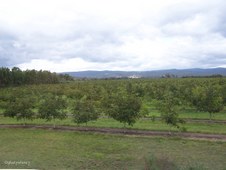
21
Walnut Orchard
|

22
Grazing Sheep
Cloudy skies over this rural scene.
| 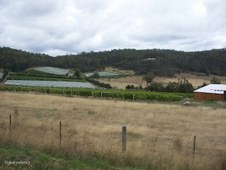
23
Orchard and Vineyards
Vineyards under netting cover and irrigated Orchard beyond dry grass of summer.
| 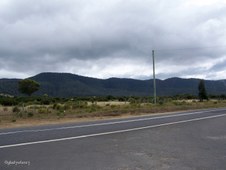
24
Eastern Tiers rise in the distance
|
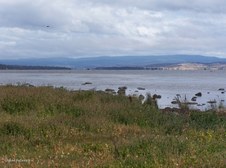
25
Moulting Lagoon
Moulting Lagoon is a wetland of international importance due to the numbers and species of birds that frequent the area. It is home for local wetland species and migratory waders from Russia, China and other locations from around the world.
| 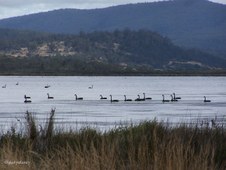
26
Black Swans on Moulting Lagoon
| 
27
Black Swans on Moulting Lagoon
|

28
Samphire at Moulting Lagoon
| 
29
Farm Scene
| 
30
Dried Seed Heads
|

31
Stark Tree Trunk
| 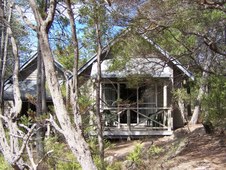
32
Wilderness Cabin
The Wilderness Timber Cabins at Freycinet Lodge blend in with the natural vegetation of Freycinet National Park. These Cabins are a Nature Retreat without the intrusion of Television or Telephones.
| 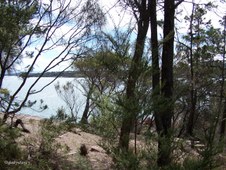
33
Cabin View
Coles Bay viewed from Wilderness Cabin at Freycinet Lodge
|

34
Bennetts Wallaby
Bennetts Wallaby (Macropus rufogriseus) is also known as the Red-necked Wallaby on mainland Australia.
| 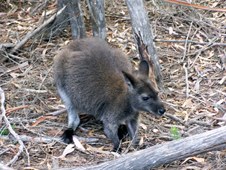
35
Bennetts Wallaby
Bennetts Wallabies are found throughout Tasmania, including the Bass Strait islands. The species is largely solitary, allthough loose groups, known as mobs, often share common feeding areas. They feed at afternoon and dusk, generally grazing on grass and herbs. There is a distinct breeding season, with births occuring late summer to early autumn. This is in contrast to mainland populations of the same species, where births occur year round. The gesatation period is 30 days. Pouch life is about 280 days and weaning occurs at 12-17 months.
| 
36
Honeymoon Bay
Honeymoon Bay in Freycinet National Park.
|

37
The Hazards
The Hazards with Mt Amos on the right, contain rugged red and pink granite outcrops on peaks that fall down to the sea.
| 
38
Mt Amos (454 m)
| 
39
Mt Amos (454 m)
Zoomed in on Mt Amos (454 m) from Honeymoon Bay.
|
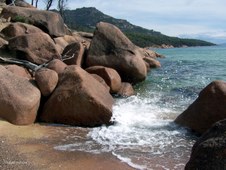
40
Mt Mayson (415 m)
Mt Mayson (415 m) beyond the Rocks, Freycinet National Park.
| 
41
Pink Granite Rocks
Pink Granite Rocks at Honeymoon Bay, Freycinet National Park.
| 
42
Rocks and Sea at Freycinet National Park
|

43
Great Oyster Bay
Part of Great Oyster Bay from Freycinet National Park.
| 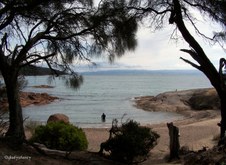
44
Honeymoon Bay
Honeymoon Bay with Great Oyster Bay beyond, Freycinet National Park.
| 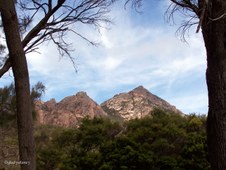
45
The Hazards
Sunlight on the Peaks of The Hazards, Freycinet National Park.
|

46
Cloud Formation
Late afternoon Clouds over Great Oyster Bay -- looks promising for a good Sunset.
| 
47
Dining at Sunset
Dining on the Deck at Sunset, Freycinet Lodge, see album 'Tasmanian Sunset'for full sequence of sunset photos.
| 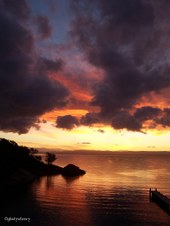
48
Freycinet Sunset
The full sequence of this magnificent Sunset has been posted in a separate album, 'Tasmanian Sunset'.
|

49
Freycinet Jetty
View over Great Oyster Bay next morning from Freycinet Lodge.
| 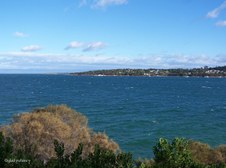
50
Coles Bay Township
| 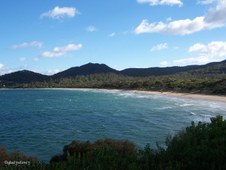
51
Richardsons Beach
|

52
Framed by Trees
Great Oyster Bay framed by Trees along the track to Mt Amos Lookout.
| 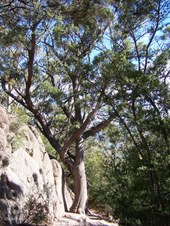
53
Track to Lookout
Rocks and Trees along track to Mt Amos Lookout.
| 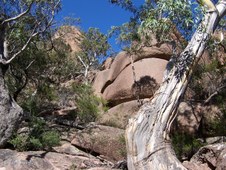
54
Steep climb to the Mt Amos Lookout
|

55
Tasmanian Banksia
| 
56
Still Climbing
Upwards, ever upwards to the Mt Amos Lookout.
| 
57
Saddle Seat
A welcome Rest at the Saddle Seat -- it is ever so comfy! The Saddle Seat was designed and constructed by School of Architecture Students, 2000.
|

58
Wineglass Bay
Panorama of Wineglass Bay from Mt Amos Lookout. The Isthmus separates Wineglass Bay from Hazards Beach on the right.
| 
59
Wineglass Beach
Panorama of the blue waters and white sands of Wineglass Beach from Mt Amos Lookout.
| 
60
Clouds over Wineglass Bay
Panorama of Wineglass Bay showing Channel to Thouin Bay.
|

61
Wineglass Bay Entrance
Entrance to Wineglass Bay, viewed from Mt Amos Lookout.
| 
62
Wineglass Beach, Tasmania
Zoomed in to the Blue Waters and White Sands of Wineglass Bay, Tasmania, Australia.
| 
63
The Channel
Thouin Bay beyond the Channel from Wineglass Beach.
|

64
Wineglass Beach
Blue Waters and White Sands of Wineglass Beach, with Isthmus and Hazards Beach to the right.
| 
65
Rocky Slopes
The Rocky Slopes of The Hazards with the Hazards Beach on left.
| 
66
Granite Hills
Granite Rocks dotted with Vegetation form the slopes of The Hazards.
|

67
Parting View of Wineglass Bay
A parting view of the beautiful Wineglass Bay, Freycinet National Park.
| 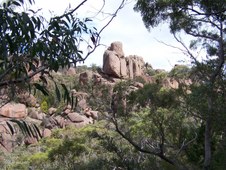
68
Granite Rocks
Towering granite rock formations, Freycinet National Park.
| 
69
Mt Freycinet (620 m)
Mt Freycinet (620 m) and Mt Graham (579 m) left, with very last glimpse of Wineglass Beach on the return journey.
|

70
Eucalypt Tree
Beautiful colourings in the trunk of this Eucalypt Tree, Freycinet National Park.
| 
71
Granite Formations
Freycinet National Park.
| 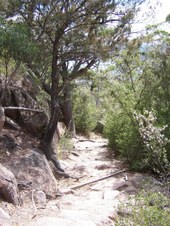
72
Descending Mt Amos
Returning down the Mt Amos Lookout track, Freycinet National Park.
|

73
Downward Path
| 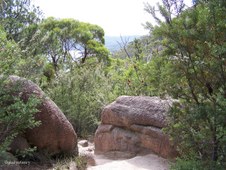
74
Between the Rocks
Pink Granite Rocks either side of the Mt Amos Lookout track, Freycinet National Park.
| 
75
Rock Shelter
Possibly this Rock has provided shelter for many a climber caught in the Rain. Freycinet National Park.
|
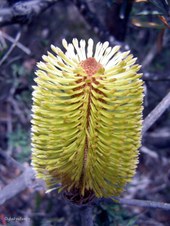
76
Silver Banksia
Silver Banksia (Banksia marginata) is Tasmania's only widespread Banksia.
| 
77
Colourful Tree Trunk
Beautiful colourings on the trunk of this Eucalyptus Tree in Freycinet National Park.
| 
78
Pink Granite Rocks
A glimpse of Great Oyster Bay viewed over a Pink Granite Rock, Freycinet National Park.
|

79
Granite Boulders
| 
80
Rock Colourings
Colourings of the Rocks on the slopes of The Hazards, Freycinet National Park.
| 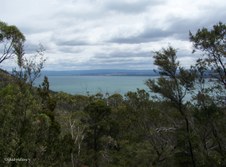
81
Great Oyster Bay
Nearing the end of the descent, Great Oyster Bay is in view again.
|
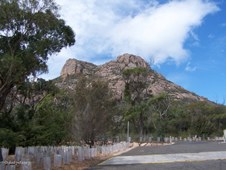
82
Mt Amos
Back in the Carpark, looing up at Mt Amos.
| 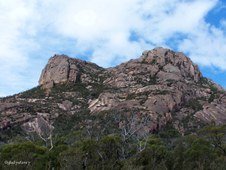
83
Top of Mt Amos
Zoomed in to the top of Mt Amos, Freycinet National Park.
| 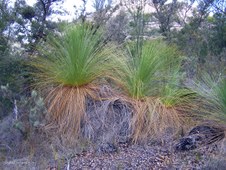
84
Tasmanian Grasstrees
Two species of Tasmanian Grasstrees (Xanthorrhoea arenaria and Xanthorrhoea bracteata) are in decline and have been listed under the Threatened Tasmanian Grasstrees Recovery Plan.
|
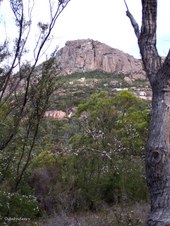
85
Mt Amos
Mt Amos between the trees while walking back to Freycinet Lodge.
| 
86
Groundcover Ferns
| 
87
Pink Granite Rock
|
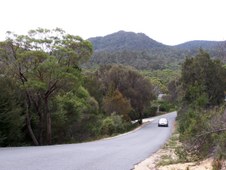
88
Freycinet National Park
Freycinet National Park covers 10,000ha on the Freycinet Peninsula.
| 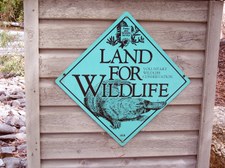
89
Land for Wildlife
| 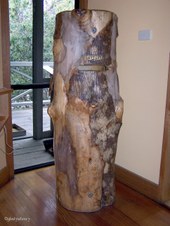
90
Letter Box from Tree Trunk
This unusual Letter Box at the Freycinet Lodge is made from a Tree Trunk.
|

91
Packard One-Twenty
Noticed this old-timer in the carpark. The Packard One-Twenty (also One Twenty and 120) was an automobile produced by the Packard Motors Corporation of Detroit, Michigan from 1935 to 1937 and from 1939 through the 1941 model years.
| 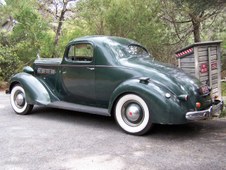
92
Packard One-Twenty
The One-Twenty is an important car in Packard's history because it signified the first time that Packard entered into the highly competitive mid-priced eight cylinder car market.
| 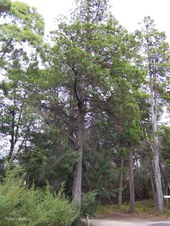
93
Oyster Bay Pine
The Oyster Bay Pine (Callitris rhomboidea) is one of Tasmania’s 11 native conifers. Growing in Freycinet National Park.
|
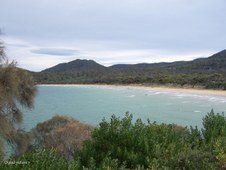
94
Richardsons Beach viewed from Freycinet Lodge
| 
95
Panorama of the Freycinet Peninsula
| 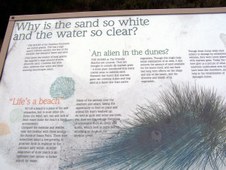
96
Information
The Rocks of the Freycinet Peninsular are mainly Granite with a high Quartz (Silicon) content with few of the minerals that discolour the sand. Over aeons the erosion of the local granite has supplied a large amount of pure silica-rich sand. Combine this with clear sediment-free water and these stunning beachscapes result.
|

97
White Sand and Clear Water
The previous caption explains why the Sand is so White and the Water so Clear. Sadly, the Sunshine was lacking this day at the Friendly Beaches, Freycinet National Park.
| 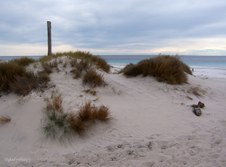
98
Sand Dunes
Tufts of grass on sand dunes at Friendly Beaches, Freycinet National Park.
| 
99
Bird Breeding Area
This is a Sensitive Bird Breeding Area where Shorebirds nest on the dry sand between September and March. Walk on the wet sand at the water's edge and watch out for small chicks feeding. They are hard to see and can easily be stepped on. With your help we can stop the decline of shorebirds such as the Hooded Plover.
|

100
Friendly Beaches
| 
101
Birdwatchers on Friendly Beaches
| 
102
Masked Lapwings
The Birdwatchers were watching these Masked Lapwings (Vanellus miles) on the Friendly Beaches, Freycinet National Park.
|
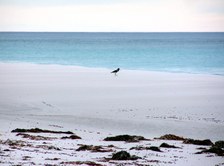
103
Masked Lapwing on the Friendly Beaches
| 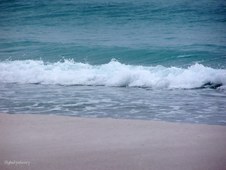
104
Azure Blue Water
Friendly Beaches, Freycinet National Park.
| 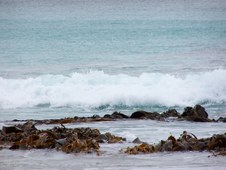
105
Waves and Kelp
Kelp washed ashore on the Friendly Beaches, Freycinet National Park, Tasmania.
|